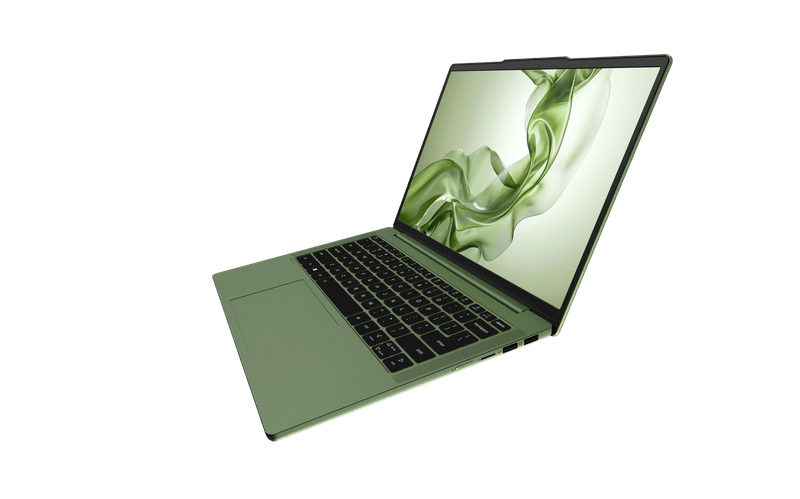Galaxy Tab S6 vs. Surface Pro 6: Which Should You Buy?
Just when we thought Android tablets were dead, Samsung released the best one yet in the Galaxy Tab S6. The company's latest flagship Android slate has a lot going for it, including fast performance, powerful speakers and a clever design with integrated S Pen charging. But what really makes the Galaxy Tab S6 a standout device is Samsung's DeX UI and the new keyboard, both of which make the Galaxy Tab S6 a viable laptop replacement.
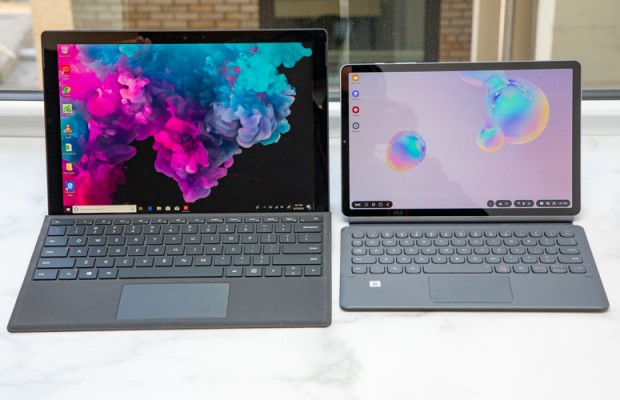
But is the Galaxy Tab S6 the best laptop replacement? To find out, we put it up against our favorite detachable 2-in-1 laptop, the Microsoft Surface Pro 6. With laptop-grade performance, long battery life and a gorgeous display, the Surface Pro 6 cemented its spot as one of the best portable computing devices on the market. And with the Surface Pro 7 set to launch later this year, we expect the Surface Pro line to widen its gap at the top.
But has Microsoft's flagship tablet already been dethroned by the Galaxy Tab S6? Let's find out.
Samsung Galaxy Tab S6 vs. Microsoft Surface Pro 6: Specs compared
| Row 0 - Cell 0 | Samsung Galaxy Tab S6 | Microsoft Surface Pro 6 |
| Starting Price | $650; $830 w/keyboard | $899; $1,028 w/keyboard |
| Display | 10.5 inches, 2560 x 1600 (touch screen) | 12.3 inches, 2736 x 1824 (touch screen) |
| CPU | Qualcomm Snapdragon 855 | Intel Core i5-8250U |
| RAM | 6GB | 8GB |
| Storage | 128GB | 256GB |
| Ports | USB-C, microSD | USB 3.0, DisplayPort, Surface Connect, microSD, headphone |
| Size | 9.6 x 6.3 x 0.2 inches | 11.5 x 7.9 x 0.3 inches |
| Weight | 1 pound | 1.7 pounds |
Design
You'll feel better about spending money on these tablets when you get your hands on them. Both slates look gorgeous and feel premium thanks to their metal chassis.
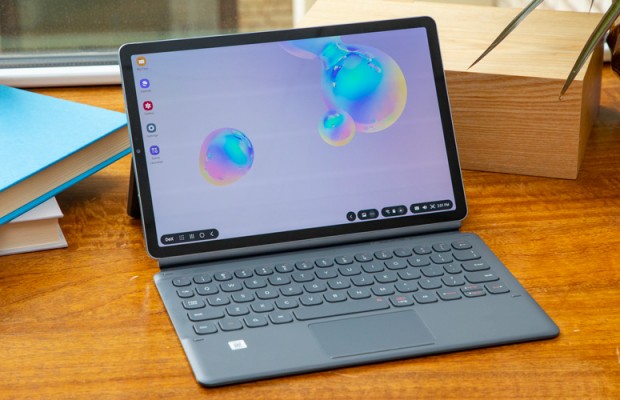
My preference leans toward the aesthetics of the Galaxy Tab S6, even though the Surface Pro 6's matte-black finish gives it a cool stealthy look. That's because, compared to the Surface, the Tab S6 has slimmer bezels, a thinner chassis and a more interesting metallic-blue color.
Stay in the know with Laptop Mag
Get our in-depth reviews, helpful tips, great deals, and the biggest news stories delivered to your inbox.
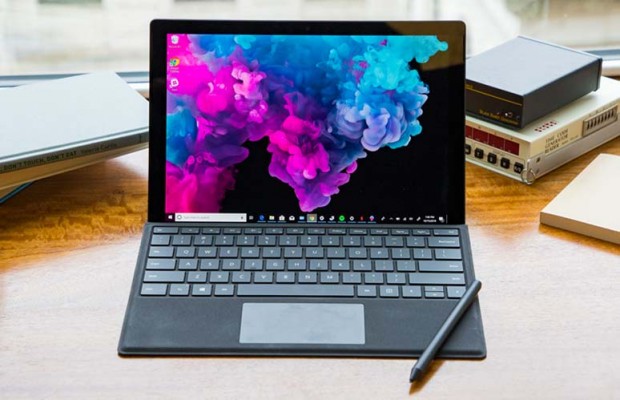
Also, the Galaxy Tab S6 has a magnetic slot on the back where you can charge and store the included S Pen. The Surface Pro 6 doesn't have a solution for the optional Surface Pen, but it does have a built-in kickstand. If you want to use the Galaxy Tab S6 as a laptop, you have to attach a separate cover that, if it's not secured well enough, pops off when you extend the kickstand.
MORE: Best Tablets - Top Tablets on the Market - Laptop Mag
The Surface Pro 6 (11.5 x 7.9 x 0.3 inches, 1.7 pounds) has a 12.3-inch display and is, therefore, larger and heavier than the 10.5-inch Galaxy Tab (9.6 x 6.3 x 0.2 inches, 1 pound). However, you won't have any problem slipping either of these devices into your backpack and taking it on a trip.
Winner: Galaxy Tab S6
Ports
If only we could mix and match the ports housed on these two tablets. The Surface Pro 6 is missing the USB-C port found on the Galaxy Tab S6, while the Tab S6 doesn't have a headphone jack, which you get on the Surface Pro 6.
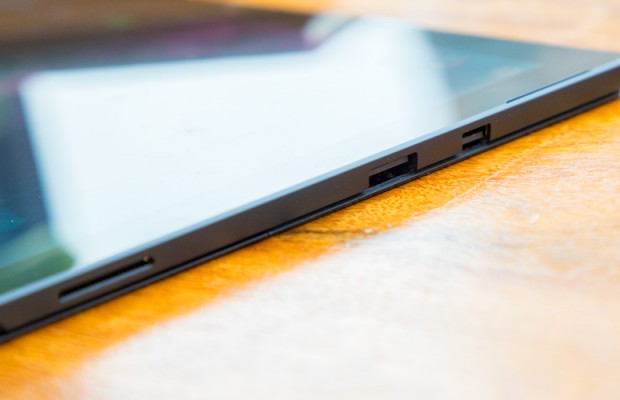
Apart from those connections, the Surface Pro 6 has a USB 3.0 port, DisplayPort, Surface Connect input and microSD card reader, while the Galaxy Tab S6 has only a microSD slot.
Winner: Surface Pro 6
Display
If you plan on using your machine for watching videos or flipping through Instagram photos, then get the Surface Pro 6.
Not only does the Surface Pro 6 have a larger, 12.3-inch, 2736 x 1824-pixel display, but the panel is also slightly more saturated than the Galaxy Tab S6's 10.5-inch, 2560 x 1600-pixel Super AMOLED screen.
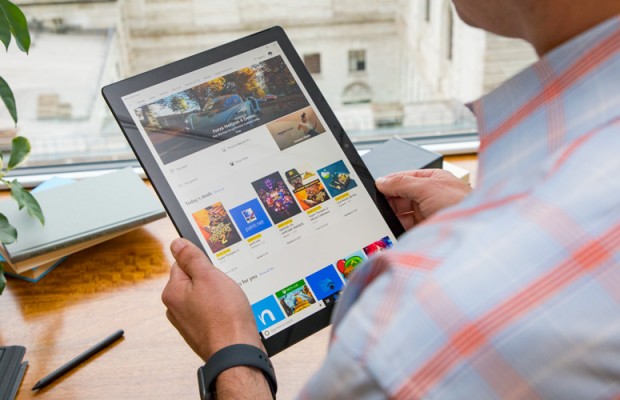
The differences between these displays are subtle. When I watched a trailer for Bong Joon-ho's dark comedy film Parasite, the Surface Pro 6 accurately captured Song Kang-ho's purple shirt, whereas the Galaxy Tab S6's screen made the garment look brown. Also, colors in the little boy's feather hat were more vivid on the Surface Pro 6 but more true to life on the Galaxy Tab S6. Fortunately, both panels are extremely sharp and plenty bright.
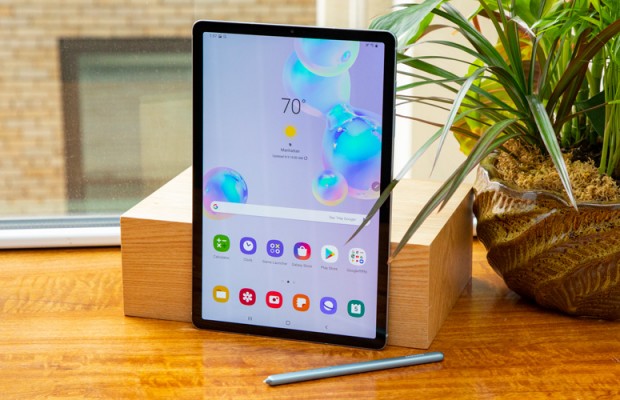
The two displays are almost even on paper. According to our colorimeter, the Surface Pro 6's panel covers 136% of the sRGB color gamut, which makes it a bit brighter than the Galaxy Tab S6's display (122%).
MORE: Hybrid Laptop Buying Guide: How to Buy a 2-in-1 Model
With a peak brightness of 408 nits, the Surface Pro 6's display is also brighter than the Galaxy Tab S6's screen in a dimly lit room. However, the Galaxy Tab S6's light sensor can brighten the display to 473 nits when it detects that you're in a bright environment.
Winner: Surface Pro 6
Keyboard and touchpad
This isn't even close. The Surface Pro 6's Type Cover offers a much better typing experience than the Galaxy Tab S6's Book Cover keyboard.
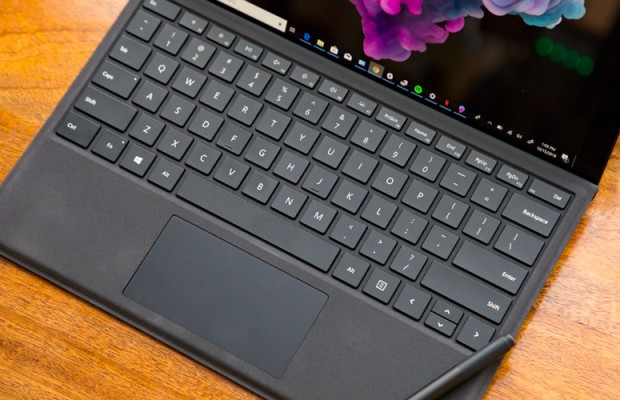
The Galaxy Tab S6's keyboard is cramped, and the keys themselves are quite small. It's not a terrible keyboard — the keys have a really pleasant snappiness to them — but it doesn't hold up to what Microsoft offers.
In comparison, the keys on the Surface Pro 6's detachable keyboard are just as large as those on most laptops. And although they're a bit shallower than those on Samsung's Book Cover, they still offer a similar clickiness.
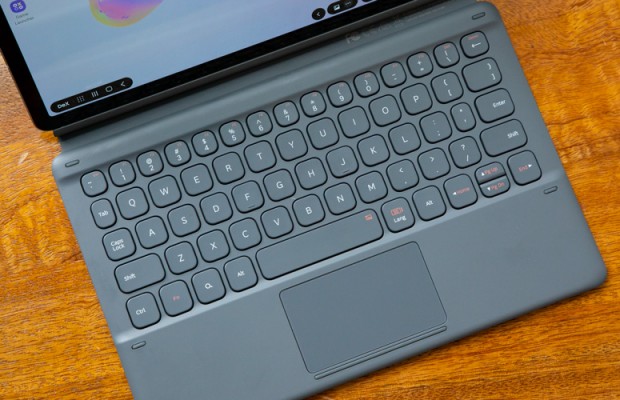
I exceeded my typical 119 words per minute and 95% accuracy on the 10fastfingers.com typing test on the Surface Pro 6, reaching 121 wpm at 96% accuracy. On the Galaxy Tab S6, my score fell to 112 wpm with only a 92% accuracy rate.
MORE: Best 2-in-1 Laptops: Best Tablet Laptops - Laptop Mag
I applaud Samsung for adding a touchpad to the Galaxy Tab S6's detachable keyboard, which is great when you're using the tablet in desktop mode. The touchpads on both keyboard accessories are smooth and responsive, but the Surface Pro 6's pad gives you more surface to work with.
Winner: Surface Pro 6
Performance
The Qualcomm Snapdragon 855 SoC powering the Galaxy Tab S6 is a huge improvement over the chip in the Tab S4. However, ARM-based chips don't quite offer the same performance as Intel's U-series CPUs, like the Core i5-8250U in the Surface Pro 6.
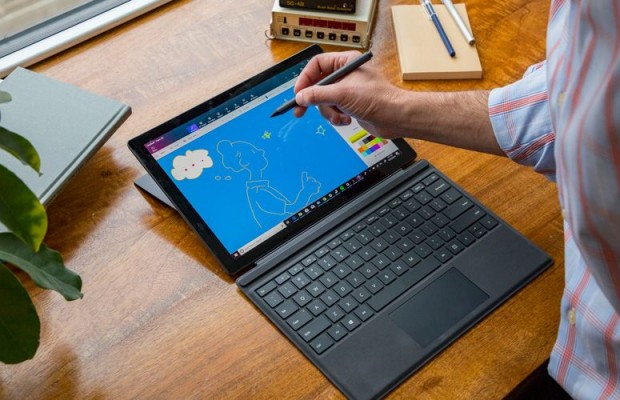
That much was made clear in our benchmark testing. The Galaxy Tab S6 scored a 10,387 on the Geekbench 4 overall-performance test, which is a few thousand points short of the Surface Pro 6's mark of 13,025.
On our graphics benchmark, the two were a lot closer. In fact, the Galaxy Tab S6 even had the edge in this one, scoring a 77,386 on 3DMark Ice Storm Unlimited compared to the Surface Pro 6's score of 73,697.
Winner: Surface Pro 6
Android+DeX vs. Windows 10
Your experiencing using these two tablets will be largely influenced by their respective operating systems. The Galaxy Tab S6 runs Android 9.0 in tablet mode and DeX when attached to a keyboard. Of course, the Surface Pro 6 runs Windows 10.
Samsung's Dex enables better multitasking, which is good for those who need a desktop interface for better productivity. DeX will look familiar to anyone who has owned a Mac or Windows PC. Apps are organized on a task bar and pinned to the DeX desktop, while settings icons for Bluetooth and Wi-Fi are located in the bottom right corner.
MORE: Windows 10 vs. macOS vs. Chrome OS: Which Is Best for Students?
The main benefit DeX brings to Android is the ability to open 20 windows simultaneously. With DeX, I was able to split the Galaxy Tab S6's screen into four equal parts, three of which were taken up by Chrome tabs, while the Files app filled the fourth corner.
For a moment, it felt like I was using a true laptop. However, DeX is no replacement for a full desktop OS, because it doesn't support the third-party programs you can install on Windows 10. And even though the Galaxy Tab S6 has access to the millions of apps in the Google Play store, only a fraction of them work on DeX.
Battery life
The battery life of these two tablets is almost even, with the Surface Pro 6 having a slight edge. Microsoft's slate lasted 9 hours and 20 minutes on our battery-life test, which involves continuous web surfing over Wi-Fi at 150 nits. With a runtime of 8 hours and 58 minutes, the Galaxy Tab S6 powered down just a few minutes earlier.
Winner: Surface Pro 6
Value and price
Samsung sells two versions of the Galaxy Tab S6. The base model, with a Snapdragon 855 CPU, 6GB of RAM and 128GB of storage, costs $650 while the 256GB version goes for $730. Samsung includes the S Pen with the Galaxy Tab S6, but the optional Book Cover keyboard costs a steep $179 (currently on sale for $90) extra.
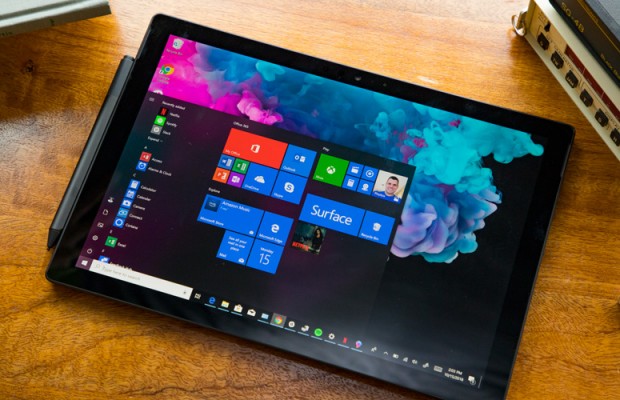
That brings the total price of the 128GB Galaxy Tab S6 with the Book Cover to $830 and the 256GB model to $910.
You can find all sorts of deals on the Surface Pro 6 with its rumored successor just weeks away from its expected launch at Microsoft's Oct. 2 event. Looking at retail pricing, the Pro 6 is a much more expensive device, especially because both the Pro Type Cover ($129) and Surface Pen ($99) are sold separately.
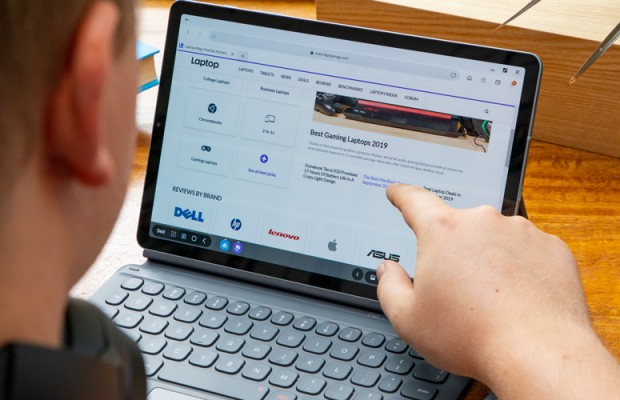
The Surface Pro 6 starts at $899 (or $1,127 with the keyboard and stylus) when configured with a Core i5 CPU, 8GB of RAM and a 128GB SSD. The 256GB version we reviewed costs $999, or a hefty $1,428 with the two accessories. Upgrading to a Core i7 CPU adds another $200 on top of that price. A well-equipped model, with a Core i7 CPU, 16GB of RAM and a 512GB SSD, is $1,599 without the keyboard and stylus.
Winner: Galaxy Tab S6
Overall winner: Surface Pro 6
| Row 0 - Cell 0 | Asus ZenBook Pro 15 | Dell XPS 15 |
| Design (10) | 9 | 8 |
| Ports (10) | 4 | 6 |
| Display (15) | 13 | 14 |
| Keyboard/Touchpad (15) | 11 | 13 |
| Performance (20) | 14 | 16 |
| Battery Life (20) | 16 | 17 |
| Value (10) | 8 | 6 |
| Overall (100) | 75 | 80 |
As you can see, the Microsoft Surface Pro 6 remains the best detachable tablet on the market, and with the Surface Pro 7 nearing its expected release, the gap could increase even further. Having said that, the Galaxy Tab S6 is an excellent alternative for people who love Android but want something that's better at multitasking.
So, even though the Surface Pro 6 has a better display, faster performance and a more comfortable keyboard, you shouldn't rule out the Galaxy Tab S6, especially if Android's huge catalog of apps appeals to you.
Credit: Laptop Mag
Phillip Tracy is the assistant managing editor at Laptop Mag where he reviews laptops, phones and other gadgets while covering the latest industry news. After graduating with a journalism degree from the University of Texas at Austin, Phillip became a tech reporter at the Daily Dot. There, he wrote reviews for a range of gadgets and covered everything from social media trends to cybersecurity. Prior to that, he wrote for RCR Wireless News covering 5G and IoT. When he's not tinkering with devices, you can find Phillip playing video games, reading, traveling or watching soccer.

